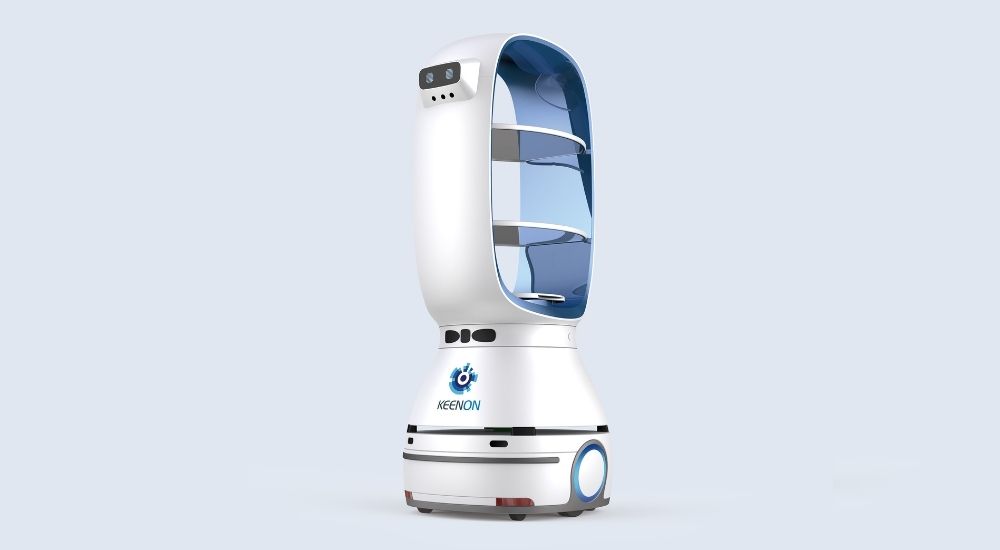How the pandemic is driving hospitality to become early adopters for robots

Robotics is an interdisciplinary sector of science and engineering dedicated to the design, construction and use of mechanical robots. Humanoid robots are robots that look like and or mimic human behavior. These robots usually perform human-like activities like running, jumping and carrying objects, and are sometimes designed to look like us, even having human faces and expressions.
Two of the most prominent examples of humanoid robots are Hanson Robotics’ Sophia and Boston Dynamics’ Atlas.
Humanoids are widely accepted in the hospitality industry for information sharing, food and beverage service and in-room delivery areas. During the recent pandemic, there are several hotels in the far eastern region managed their entire guest services using robots.
An industrial robot is an automatically controlled, reprogrammable, multipurpose manipulator programmable in three or more axes. The field of industrial robotics may be more practically defined as the study, design and use of robot systems for. The most used robot configurations for industrial automation, include articulated robots, SCARA robots and gantry robots.
Consumer robots are robots you can buy and use just for fun or to help you with tasks and chores. Examples are the robot dog Aibo, the Roomba vacuum, AI-powered robot assistants, and a growing variety of robotic toys and kits.

Use cases
Robots will play an important role in hospitality in guest facing departments providing information and guidelines. Also, due to the pandemic, there is a significant role for robots in food service industry. There are several hotels and restaurants are early adaptors of this technology and providing unmatched Guest service experience.
Intelligent robots can give us a check-up with a simple stethoscope. They will interact with patients, check on their conditions, and evaluate the need for further appointments. Smart classrooms are another great performance platform for robots soon. Autonomous vehicles could be another extended arena for humanoids.
Hospitality
Guest communication, information sharing, food and beverage delivery, food and beverage preparation, guest service delivery.
Education
This is aimed at the next generation of roboticists, for use at home or in classrooms. It includes hands-on programmable sets from Lego, 3D printers with lesson plans, and teacher robots like EMYS.
Defense and homeland
Military robots include ground systems like drones; Endeavor Robotics’ PackBot, used in Iraq and Afghanistan to scout for improvised explosive devices; and BigDog, designed to assist troops in carrying heavy gear.
Healthcare
Medical and health-care robots include systems such as the da Vinci surgical robot and bionic prostheses, as well as robotic exoskeletons.
Future challenges
The first and foremost challenge is to create bio-inspired robots, including a battery to match metabolic conversion, muscle-like actuators, self-healing material, autonomy in any environment, human-like perception, and computation and reasoning. The next one is better power sources which let the robots operate wirelessly in unstructured environments, extracting energy from light, vibrations, and mechanical movement.
Moving to navigation in unmapped environments, future robots need to be able to operate in environments that are unmapped and poorly understood. Brain-computer interfaces would enable some devices and machines to be controlled by your mind. Brain-computer interfaces could be quite useful in augmenting human abilities in the future but developing the technology for wider adoption is the challenge.
Today most robots are providing extended support for services in an automated environment, mostly controlled by machines. In coming years, artificial intelligence, brain-computer interfaces and augmented reality will play a significant role in robots development making them capable of performing several close to human acts.
It is possible to foresee the usage of robots in hotel receptions, replacing the traditional human receptionist; restaurant entrances, placing the traditional hostesses; and in food delivery to restaurant tables, replacing the traditional servers. These robots are developed to understand the situations where are being deployed.

Key takeaways
- Humanoid robots are robots that look like and or mimic human behavior.
- An industrial robot is an automatically controlled, reprogrammable, multipurpose manipulator programmable in three or more axes.
- Consumer robots are robots you can buy and use just for fun or to help you with tasks and chores
- One challenge is to create bio-inspired robots, including a battery to match metabolic conversion.
- Another challenge is better power sources which let the robots operate wirelessly in unstructured environments.
- Robots need to be able to operate in environments that are unmapped and poorly understood.
- Brain-computer interfaces would enable some devices and machines to be controlled by your mind.
Robots are being adopted in hospitality for information sharing, food and beverage, in-room delivery, with some far eastern countries taking the lead.




